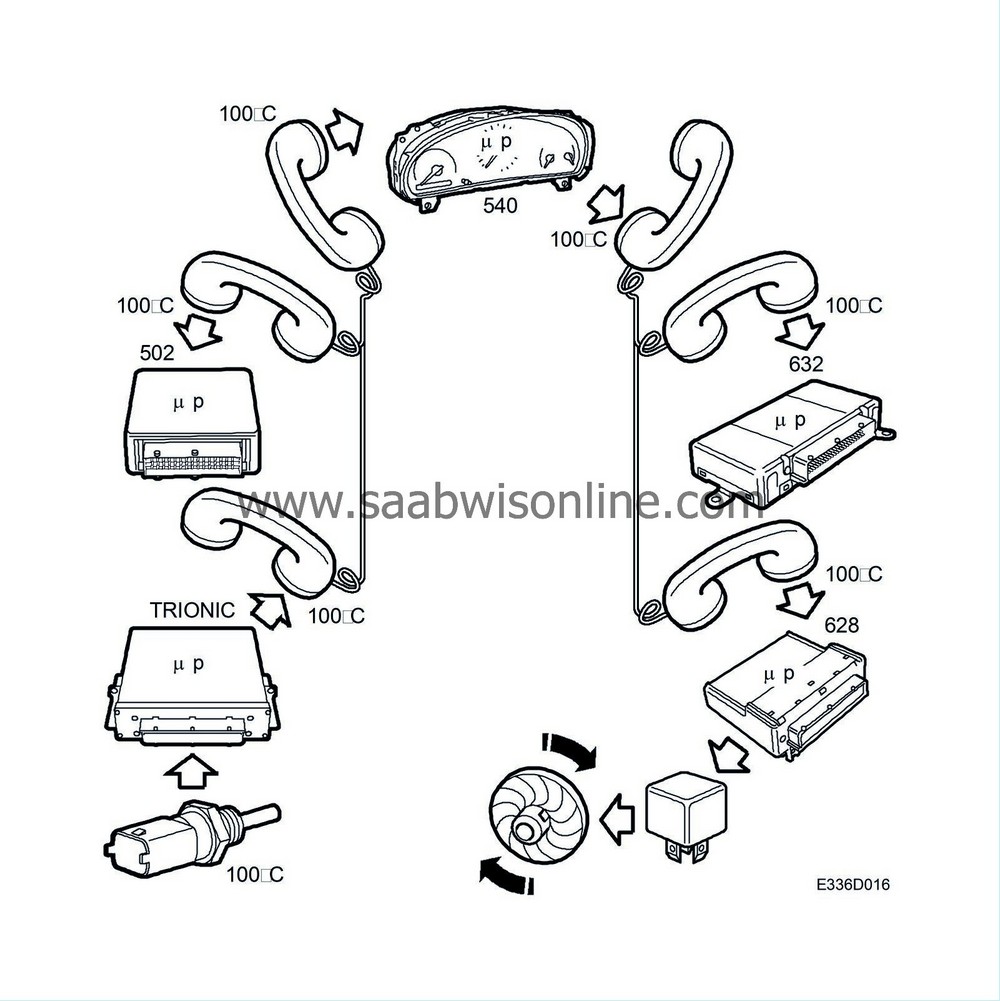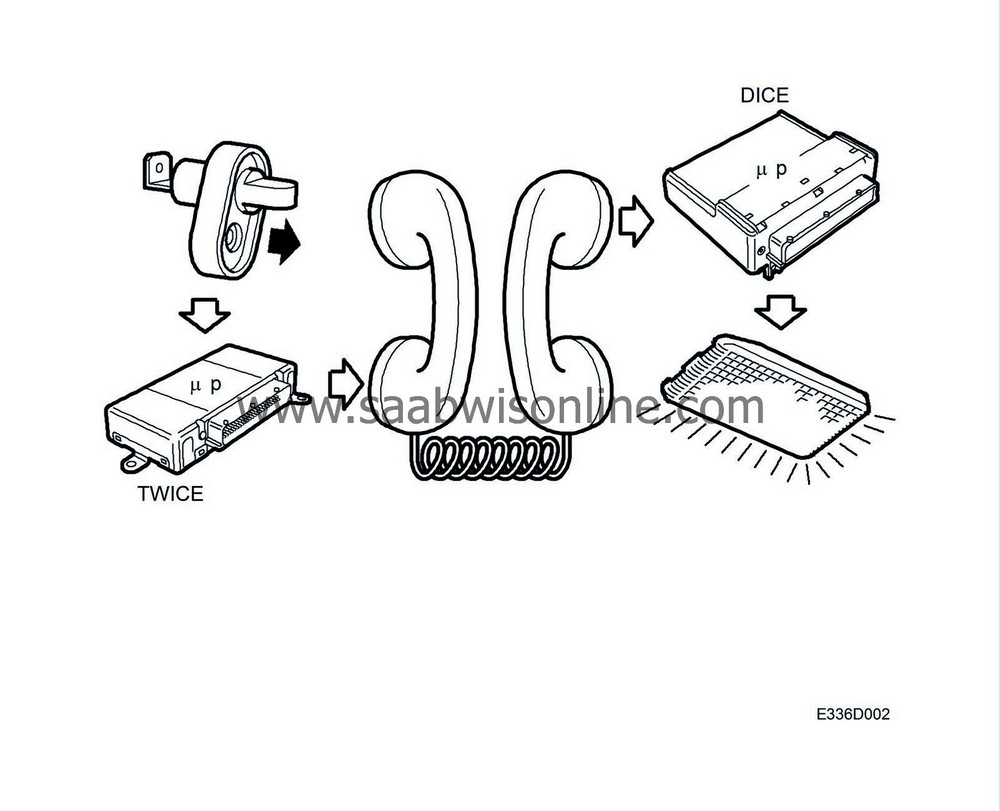PRE-RELEASE
Principle of communication
| Principle of communication |
When one of the control module microprocessors "speaks" the other control modules listen regardless of whether or not the information is of interest to them. MIU transfers an assortment of information between the buses. This way, information sent by one control module is available to all control modules connected to the bus.
With the bus system, analogue signal leads such as those for the turbo/APC pressure signal for the MIU, and digital signal leads such as those for PWM throttle position signals and frequency modulated engine speed signals, can be eliminated and the number of sensors consequently reduced.
The Trionic system, which is connected to a bus, has a coolant temperature sensor. This means that the temperature of the coolant is always available to all systems. For this reason, only one coolant temperature sensor is needed in the car.
The coolant temperature is used by DICE for controlling the radiator fans (see illustration), by the MIU for controlling the temperature gauge, and by the ACC for controlling ventilation fan speed and air distribution during cold starts.
Basically, the control modules connected to a bus are like one big control module with a number of sensors and a number of actuators. Bus communication may be regarded as internal control module communication.
This means that an overall view of the car is essential when carrying out fault diagnosis. A malfunction need not necessarily be caused by a fault in the system where it occurs but may very well be caused by a defective sensor in another system.




